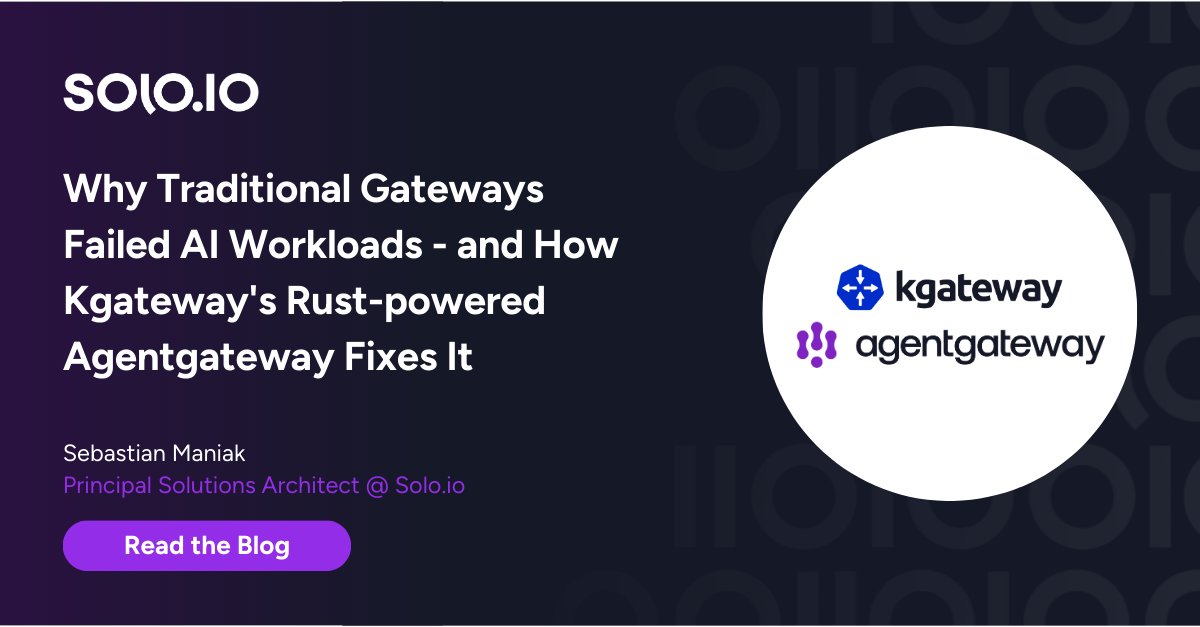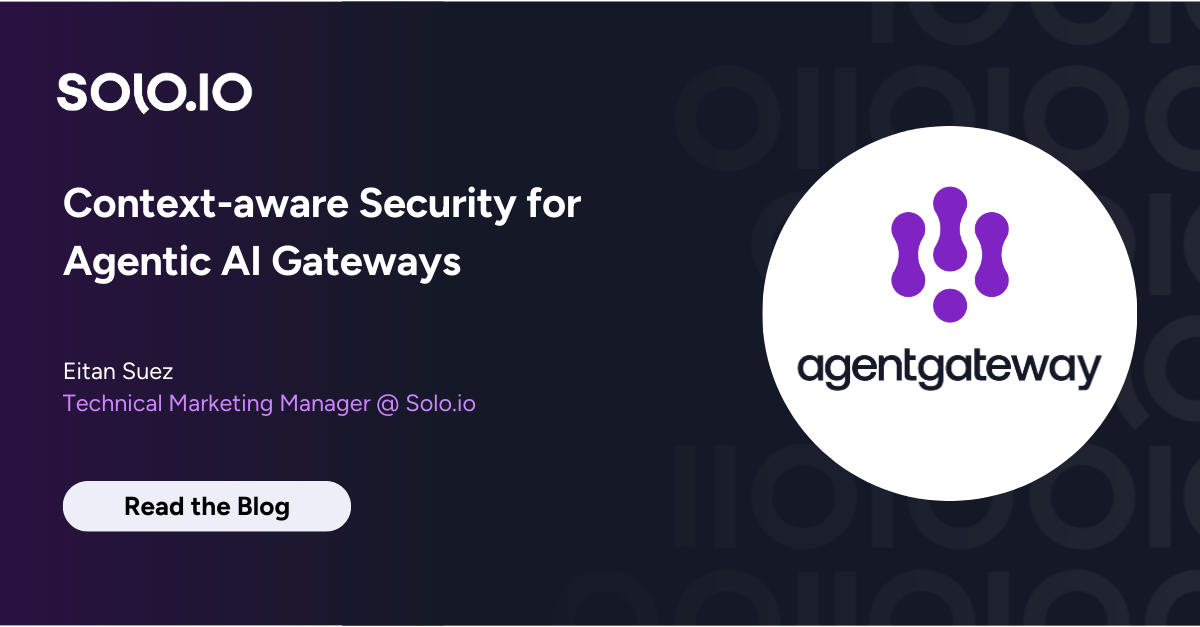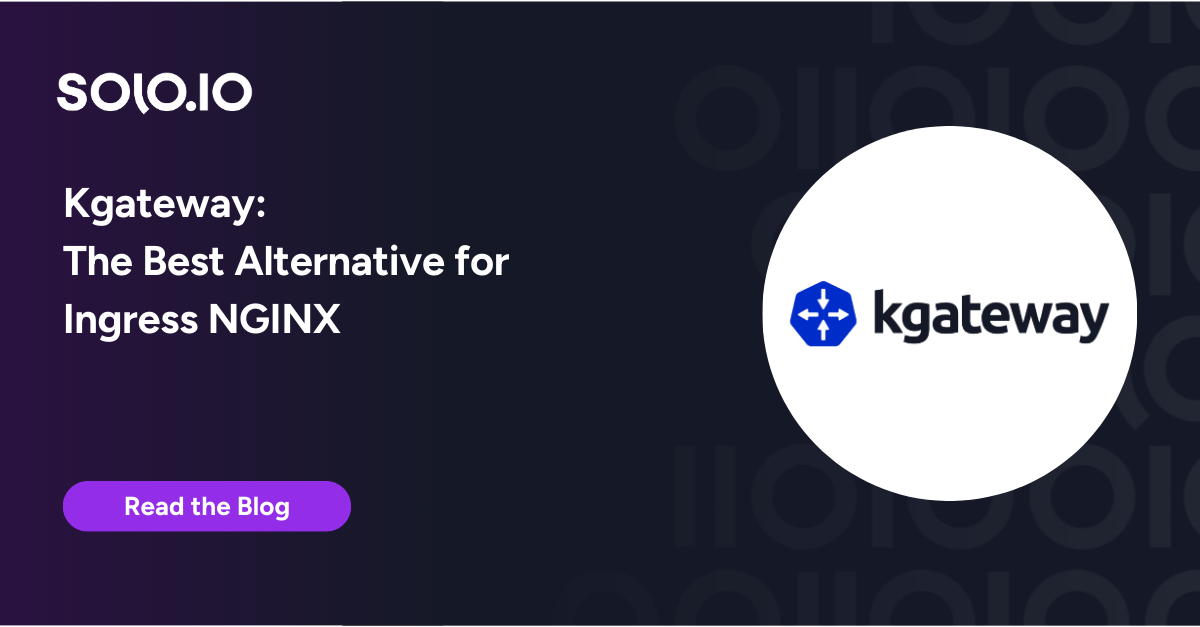Many enterprises use cert-manager to manage the lifecycle of their Kubernetes certificates. istio-csr is an agent provided by the cert-manager project to allow management of Istio's control plane and data plane certificates
Istio’s ambient mode, which has recently become generally available, has a shared proxy on each node called the ztunnel. A ztunnel acts on behalf of all the workloads running on its node, which means it needs certificates for each workload in order to be able to participate in mTLS. When fetching certificates, ztunnel will authenticate to the certificate authority (CA) with its own identity, but request the identity of another workload. Critically, the CA will enforce that the ztunnel has permission to request that identity. Requests for identities not running on the node are rejected.
The new v0.12 of istio-csr supports the ability to set trusted CA node service accounts, which allows it to correctly serve certificates to ztunnel in this fashion.
In this article, you will walk through how to install Istio in ambient mode and integrate with cert-manager.
Prepare a cluster
You will need an empty cluster for this exercise. Use your preferred Kubernetes provider — cloud or local — and don't install anything on it yet. One node will suffice, but be aware that ztunnel is a DaemonSet, and on larger clusters you will need to identify the node which is running a specific workload to query the logs for the specific ztunnel hosting it.
Install cert-manager
Install cert-manager using Helm:
helm repo add jetstack https://charts.jetstack.io --force-update
helm install \
cert-manager jetstack/cert-manager \
--namespace cert-manager \
--create-namespace \
--version v1.16.1 \
--set crds.enabled=trueCreate Issuer and Issuing Certificate
The issuer used by cert-manager will be installed in the istio-system namespace. Create it first:
kubectl create namespace istio-system
Now, create the issuer that istio-csr will use, as well as the issuing certificate:
kubectl apply -f- << EOF
# Self sSigned issuers are useful for creating root certificates
apiVersion: cert-manager.io/v1
kind: Issuer
metadata:
name: selfsigned
namespace: istio-system
spec:
selfSigned: {}
---
# Request a self-signed certificate from our Issuer; this will function as our
# issuing root certificate when we pass it into a CA Issuer.
# It's generally fine to issue root certificates like this one with long lifespans;
# the certificates which istio-csr issues will be much shorter lived.
apiVersion: cert-manager.io/v1
kind: Certificate
metadata:
name: istio-ca
namespace: istio-system
spec:
isCA: true
duration: 87600h # 10 years
secretName: istio-ca
commonName: istio-ca
privateKey:
algorithm: ECDSA
size: 256
subject:
organizations:
- cluster.local
- cert-manager
issuerRef:
name: selfsigned
kind: Issuer
group: cert-manager.io
---
# Create a CA issuer using our root. This will be the Issuer which istio-csr will use.
apiVersion: cert-manager.io/v1
kind: Issuer
metadata:
name: istio-ca
namespace: istio-system
spec:
ca:
secretName: istio-ca
EOFExport the root CA to a local file
Extract the cert from the istio-ca issuer to create the istio-root-ca needed by cert-manager:
# Export our cert from the secret it's stored in, and base64 decode to get the PEM data.
kubectl get -n istio-system secret istio-ca -ogo-template='{{index .data "tls.crt"}}' | base64 -d > ca.pem
# For interest, you can check out what our CA certificate looks like
openssl x509 -in ca.pem -noout -text
# Add our CA to a secret
kubectl create secret generic -n cert-manager istio-root-ca --from-file=ca.pem=ca.pemInstall istio-csr
Add the values to the Helm installation to point to our static root CA:
helm upgrade cert-manager-istio-csr jetstack/cert-manager-istio-csr \
--install \
--version=0.12.0 \
--namespace cert-manager \
--wait \
--set "app.tls.rootCAFile=/var/run/secrets/istio-csr/ca.pem" \
--set "app.tls.certificateDNSNames={cert-manager-istio-csr.cert-manager.svc,istio-csr.cert-manager.svc}" \
--set "app.server.caTrustedNodeAccounts=istio-system/ztunnel" \
--set "volumeMounts[0].name=root-ca" \
--set "volumeMounts[0].mountPath=/var/run/secrets/istio-csr" \
--set "volumes[0].name=root-ca" \
--set "volumes[0].secret.secretName=istio-root-ca"Note that when you install istio-csr, you must define the caTrustedNodeAccounts property with the ztunnel service account for the impersonation to work.
Double check all the pods are running and that you have a istio-csr pod in state Running:
# Check to see that the istio-csr pod is running and ready
kubectl get pods -n cert-manager | grep csr
NAME READY STATUS RESTARTS AGE
cert-manager-istio-csr-7cbc554bfc-8cd7z 1/1 Running 0 115sInstall Istio in ambient mode
When you install Istio, you need to disable the default provided CA server, and pass the address where Istio needs to communicate with cert-manager.
helm repo add istio https://istio-release.storage.googleapis.com/charts
helm repo update
helm install istio-base istio/base \
--namespace istio-system \
--version=1.24.0 \
--wait
helm install istiod istio/istiod \
--namespace istio-system \
--version=1.24.0 \
--set profile=ambient \
--set "pilot.env.ENABLE_CA_SERVER=false" \
--set "global.caAddress=cert-manager-istio-csr.cert-manager.svc:443" \
--set "global.meshID=cluster.local" \
--wait
helm install istio-cni istio/cni \
--namespace istio-system \
--version=1.24.0 \
--set profile=ambient \
--wait
helm install ztunnel istio/ztunnel \
--namespace istio-system \
--version=1.24.0 \
--set "caAddress=cert-manager-istio-csr.cert-manager.svc:443" \
--wait
kubectl get crd gateways.gateway.networking.k8s.io &> /dev/null || \
{ kubectl apply -f https://github.com/kubernetes-sigs/gateway-api/releases/download/v1.2.0/standard-install.yaml; }
Confirm the Istio components are running:
kubectl get pods -n istio-system
NAME READY STATUS RESTARTS AGE
istio-cni-node-mp8cd 1/1 Running 0 3h14m
istio-ingressgateway-c6f8fdf96-cmrfr 1/1 Running 0 3h9m
istiod-574b657c8b-bknrz 1/1 Running 0 3h17m
ztunnel-lmnhk 1/1 Running 0 3h13mRun a sample workload
In order to test your CA setup, deploy a sample workload. the httpbin sample and label the namespace to be included in the ambient mesh:
kubectl apply -f https://raw.githubusercontent.com/istio/istio/master/samples/httpbin/httpbin.yaml
In another terminal, start watching the certificate signing requests.
kubectl get certificaterequests.cert-manager.io -n istio-system -w
NAME APPROVED DENIED READY ISSUER REQUESTOR AGE
istio-ca-1 True True selfsigned system:serviceaccount:cert-manager:cert-manager 35m
istiod-2 True True istio-ca system:serviceaccount:cert-manager:cert-manager 4m46s
You will see the certificate that was issued to the control plane.
Now, enable ambient mode:
kubectl label namespace default istio.io/dataplane-mode=ambient
In your other terminal, you will see a request was created, quickly became Approved, and then became Ready.
NAME APPROVED DENIED READY ISSUER REQUESTOR AGE
istio-ca-1 True True selfsigned system:serviceaccount:cert-manager:cert-manager 35m
istiod-2 True True istio-ca system:serviceaccount:cert-manager:cert-manager 4m46s
istio-csr-rmzpp istio-ca system:serviceaccount:cert-manager:cert-manager-istio-csr 0s
istio-csr-rmzpp True istio-ca system:serviceaccount:cert-manager:cert-manager-istio-csr 0s
istio-csr-rmzpp True True istio-ca system:serviceaccount:cert-manager:cert-manager-istio-csr 0s
istio-csr-rmzpp True True istio-ca system:serviceaccount:cert-manager:cert-manager-istio-csr 0s
You can also correlate this with cert-manager’s logs:
kubectl logs -n cert-manager $(kubectl get pods -n cert-manager -o jsonpath='{.items..metadata.name}' --selector app=cert-manager) --since 2m -f
I1115 00:24:11.861423 1 conditions.go:263] Setting lastTransitionTime for CertificateRequest "istio-csr-rmzpp" condition "Approved" to 2024-11-15 00:24:11.86139125 +0000 UTC m=+1410.576942267
I1115 00:24:11.869135 1 conditions.go:263] Setting lastTransitionTime for CertificateRequest "istio-csr-rmzpp" condition "Ready" to 2024-11-15 00:24:11.869126875 +0000 UTC m=+1410.584677850
The logs from istio-csr should reflect the trust domain you defined in the certificate:
kubectl logs -n cert-manager deployments/cert-manager-istio-csr -f
I0926 20:19:28.154889 1 tls.go:247] "renewing serving certificate" logger="tls-provider"
I0926 20:19:28.243664 1 tls.go:389] "serving certificate ready" logger="tls-provider"
2024-09-26T20:19:28.243708Z info spiffe Added 1 certs to trust domain cluster.local in peer cert verifier
I0926 20:19:28.243800 1 tls.go:249] "fetched new serving certificate" logger="tls-provider" expiry-time="2024-09-26 21:19:28 +0000 UTC"
I0926 20:19:28.243825 1 tls.go:226] "waiting to renew certificate" logger="tls-provider" renewal-time="2024-09-26 20:59:28.081275292 +0000 UTC m=+4799.974134549"Validate certificates
The ztunnel logs will report the establishment of a proxy for the httpbin pod at the time you labeled the default namespace to use the ambient data plane.
Tip: If running a cluster with more than one node, find the node which the httpbin workload is running by runningkubectl get pods -n default -l app=httpbin -o wide. Query the ztunnel app in theistio-systemnamespace to find out whichztunnelis running on that same node, and view only the logs from that one. In this example, our ztunnel pod isztunnel-lmnhk.
kubectl logs -n istio-system ztunnel-lmnhk
2024-11-15T00:24:11.073994Z info dns::server starting local DNS server address=localhost:15053 component="dns"
2024-11-15T00:24:11.074120Z info proxy::inbound listener established address=[::]:15008 component="inbound" transparent=true
2024-11-15T00:24:11.074149Z info proxy::inbound_passthrough listener established address=[::]:15006 component="inbound plaintext" transparent=true
2024-11-15T00:24:11.074157Z info proxy::outbound listener established address=[::]:15001 component="outbound" transparent=true
2024-11-15T00:24:11.838900Z info xds::client:xds{id=1} received response type_url="type.googleapis.com/istio.workload.Address" size=1 removes=0
If ztunnel were to fail the CSR, the logs will reflect the request authenticate failure for the httpbin workload:
2024-11-15T00:28:39.550909Z error cert_fetcher unable to prefetch cert for "spiffe://cluster.local/ns/default/sa/httpbin", skipping, SigningRequest(Status { code: Unauthenticated, message: "request authenticate failure", metadata: MetadataMap { headers: {"content-type": "application/grpc"} }, source: None })
istioctlztunnel-config command which you can use to validate ambient mode configuration. You can retrieve the certificates for the specified ztunnel pod:
istioctl ztunnel-config certificate ztunnel-lmnhk.istio-system
CERTIFICATE NAME TYPE STATUS VALID CERT SERIAL NUMBER NOT AFTER NOT BEFORE
spiffe://cluster.local/ns/default/sa/httpbin Leaf Available true 67682361356572e8433ce715e9f0dd85 2024-11-15T01:24:11Z 2024-11-15T00:24:11Z
spiffe://cluster.local/ns/default/sa/httpbin Root Available true a20262d6b78916602c50259a44a9e5b3 2034-11-13T00:01:19Z 2024-11-15T00:01:19Z
Finally we can get the certificate, and confirm it was issued by cert-manager:
istioctl ztunnel-config certificate ztunnel-lmnhk.istio-system -o json | jq -r '.[0].certChain[0].pem' | base64 -d | openssl x509 -text -noout
Certificate:
Data:
Version: 3 (0x2)
Serial Number:
67:68:23:61:35:65:72:e8:43:3c:e7:15:e9:f0:dd:85
Signature Algorithm: ecdsa-with-SHA256
Issuer: O=cert-manager + O=cluster.local, CN=istio-ca
Validity
Not Before: Nov 15 00:24:11 2024 GMT
Not After : Nov 15 01:24:11 2024 GMT
Subject:
Subject Public Key Info:
Public Key Algorithm: id-ecPublicKey
Public-Key: (256 bit)
pub:
04:a7:57:a8:34:11:49:f5:ae:87:fd:62:74:1e:f8:
cd:51:58:41:eb:cb:8e:8a:81:c2:5c:4d:11:01:01:
af:0e:a1:ba:91:f3:3b:4e:5b:b7:6b:32:a4:9f:be:
59:95:26:07:b8:42:2c:c6:b4:d6:75:cb:e3:8d:c3:
ae:87:0b:73:e9
ASN1 OID: prime256v1
NIST CURVE: P-256
X509v3 extensions:
X509v3 Extended Key Usage:
TLS Web Client Authentication, TLS Web Server Authentication
X509v3 Basic Constraints: critical
CA:FALSE
X509v3 Authority Key Identifier:
78:36:C1:72:FF:31:6F:BB:26:26:40:EF:02:64:D1:06:FF:11:2E:57
X509v3 Subject Alternative Name: critical
URI:spiffe://cluster.local/ns/default/sa/httpbin
Signature Algorithm: ecdsa-with-SHA256
Signature Value:
30:45:02:20:74:bc:f6:70:8d:5f:fd:ce:4b:81:51:89:cd:bc:
02:ca:38:1f:2e:1d:7d:1f:64:a5:13:58:e5:9b:01:5c:5a:66:
02:21:00:ad:87:cb:ce:a6:06:ad:be:4e:7c:16:8a:c6:5b:eb:
11:0c:98:f5:71:fd:19:9e:69:68:f4:6d:7a:ae:fa:a6:0eIn conclusion
cert-manager is a popular certificate authority for Kubernetes, and using istio-csr, you can now integrate it with Istio’s ambient mode.
At Solo.io we work with customers deploying ambient mesh to consistently manage application traffic in production. We are the leading contributors to ambient mesh, and provide enhancements to ztunnel in Gloo Mesh to help you further simplify your mesh adoption.
Explore ambient mesh today, and reach out to us for any questions.



























%20a%20Bad%20Idea.png)











%20For%20More%20Dependable%20Humans.png)











